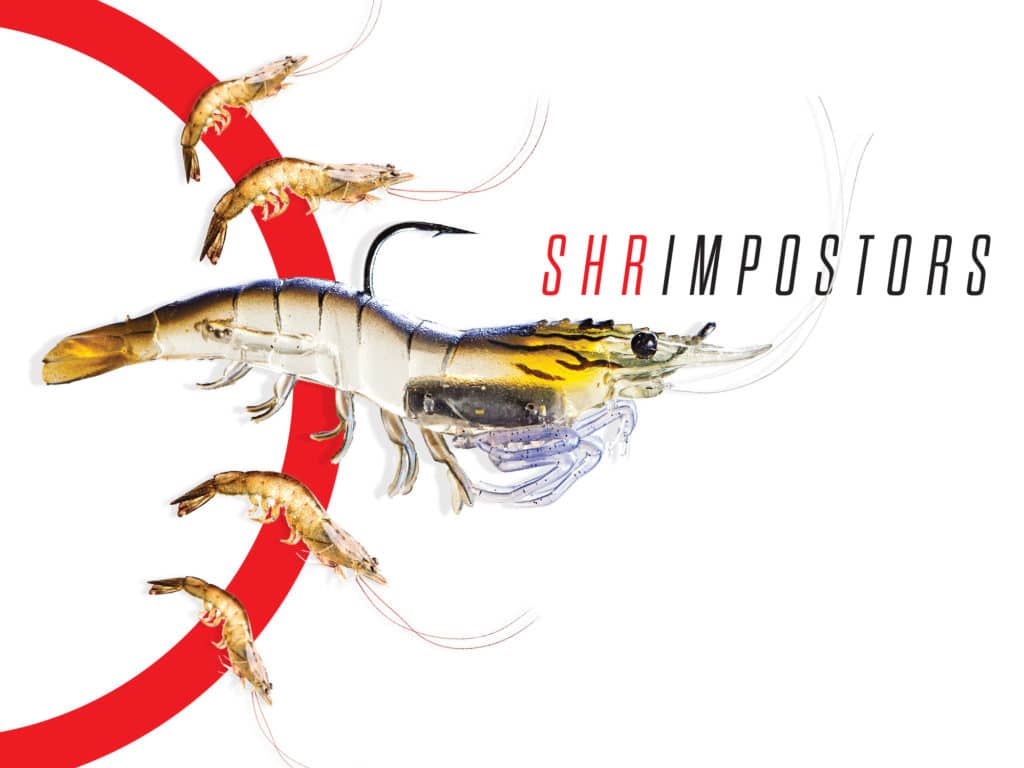
The slight splash that first caught my eye soon turned into a wake. It was subtle but steady, and the moment it came within range, I delivered a soft plastic shrimp that the unidentified fish pushing the wake promptly devoured in an explosive fashion. As my rod bent into a deep arch, I recalled something my dad and grandfather often said to me, “There’s nothing in that ocean that won’t eat a shrimp.”
Given the proclivity of so many game fish to feed on said crustaceans, it’s hard to argue against that theory, especially fishing with shrimp inshore. Shrimp’s effectiveness is precisely why it’s one of the most imitated baits. Saltwater fishing with shrimp doesn’t have to mean live bait fishing only.
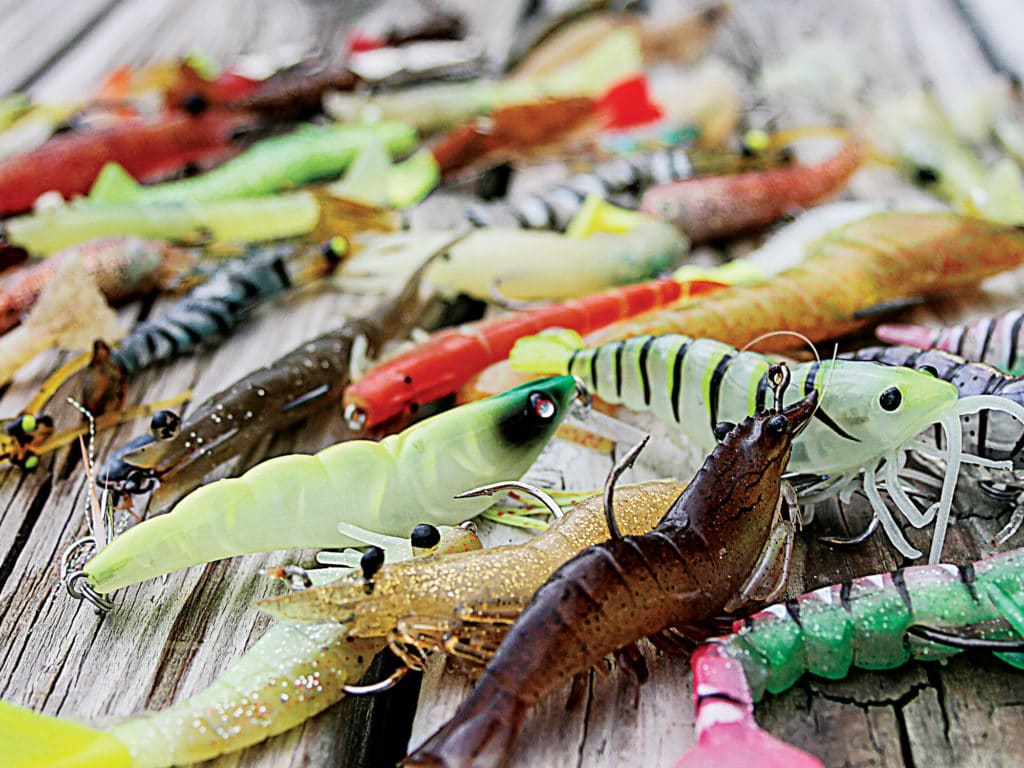
Different Types of Shrimp Lures
While there are dozens of options, not just in size and weight but also in color, action, material and even scent, grouping artificial shrimp into three broad categories — soft bodies, hard bodies and scented — enables anglers to select the menagerie that best suits their target species and the situations they’re most likely to encounter. Water clarity, depth and bottom composition need to be considered as well.
Of course, there is some crossover. Many soft-bodied or soft plastic shrimp lures are also scented, and some newer artificials, like Savage Gear’s 3D Hybrid Shrimp and LiveTarget’s Hybrid Shrimp, combine soft- and hard-body elements in their construction.
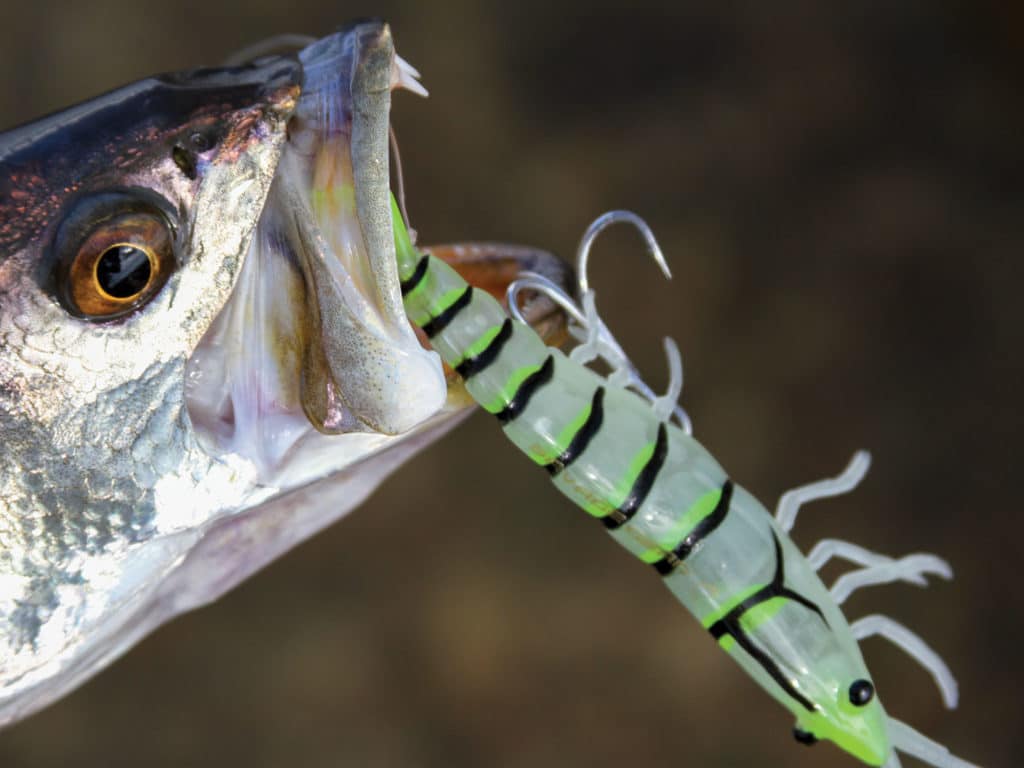
Water Clarity Matters When Using Plastic Shrimp Lures
As with many lure designs, most artificial shrimp rely heavily on fish responding to visual stimulus, so water clarity plays a major role in their success. In clear water, where fish get a good look at a bait, realistic artificials in natural colors based on 3-D scans of live shrimp — like those made by Savage Gear and LiveTarget — are more likely to entice a bite. Lures with either bright, dark or contrasting colors, or with greater reflective qualities, all of which would spook fish in clear water, are most apt to be seen and warrant strikes in turbid water.
A live shrimp’s eyes, which usually appear black, are also remarkably reflective. It’s the eyes, in fact, that often betray shrimp, alerting predators to their presence. Shrimp lures that emphasize the eyes’ reflective qualities or contrasting colors offer greater chances to trigger the fish’s predatory instincts, particularly in murky water.
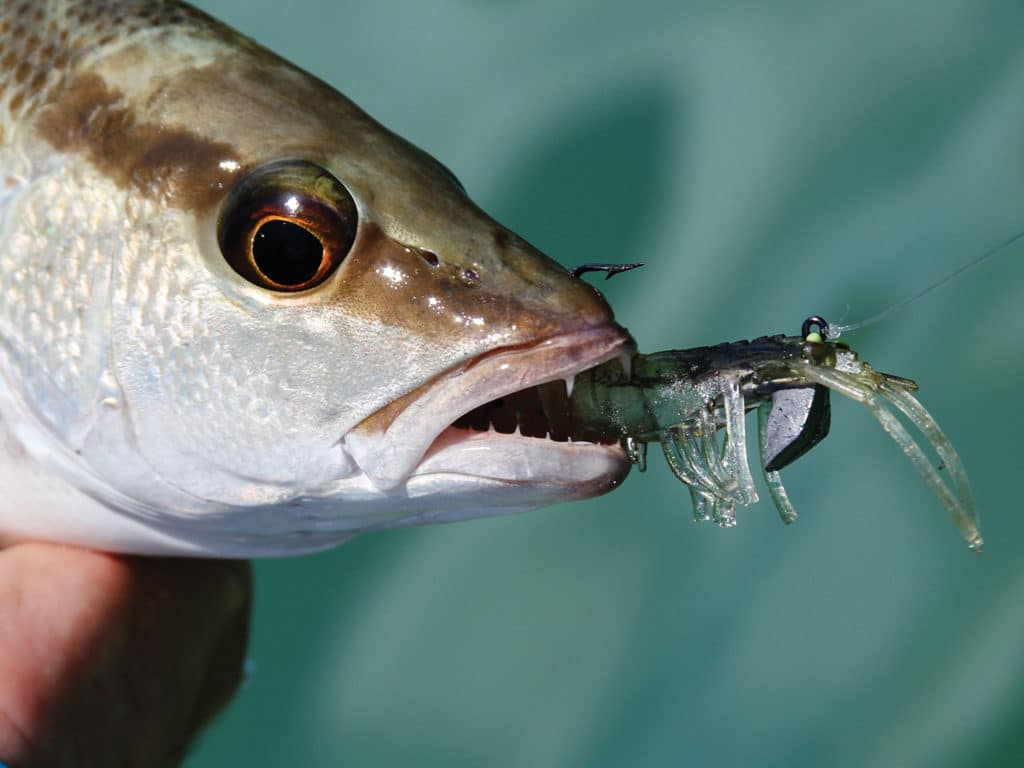
Best Depth to Fish Soft Plastic Shrimp Lures
Knowing the depth at which fish are feeding is also a key. But to take advantage of that knowledge, the angler must identify the right lures to fish different depths.
When fish like snook, trout or striped bass feed on top or just below the surface, topwater or extremely slow-sinking lures are the best shrimp lures and most effective. An ideal option is the Unfair Lures shrimp, a hard-body selection that can be worked on top with a walk-the-dog action. LiveTarget’s Rigged Shrimp, a slow sinker that tends to stay high in the water column is another good alternative.
If fish are feeding deeper, like redfish on the side of a cut, trout in deeper grass beds, or snapper on an inshore reef ledge, soft-body shrimp imitations rigged with jig heads or weighted hooks get down to the fish with ease. D.O.A.’s shrimp, Egret Baits’ Vudu Shrimp and Savage Gear’s 3D TPE Shrimp, can all be rigged with a jig head and might be the best artificial shrimp option. A Monster 3X X-Move Shrimp rigged with one of said brand’s belly-weighted hooks will do the same.
Should the situation require fishing subsurface to midrange depths, rigging an artificial shrimp under a popping cork is a productive strategy. It allows you to suspend the lure at the desired depth and over specific areas where fish will zero in on it.
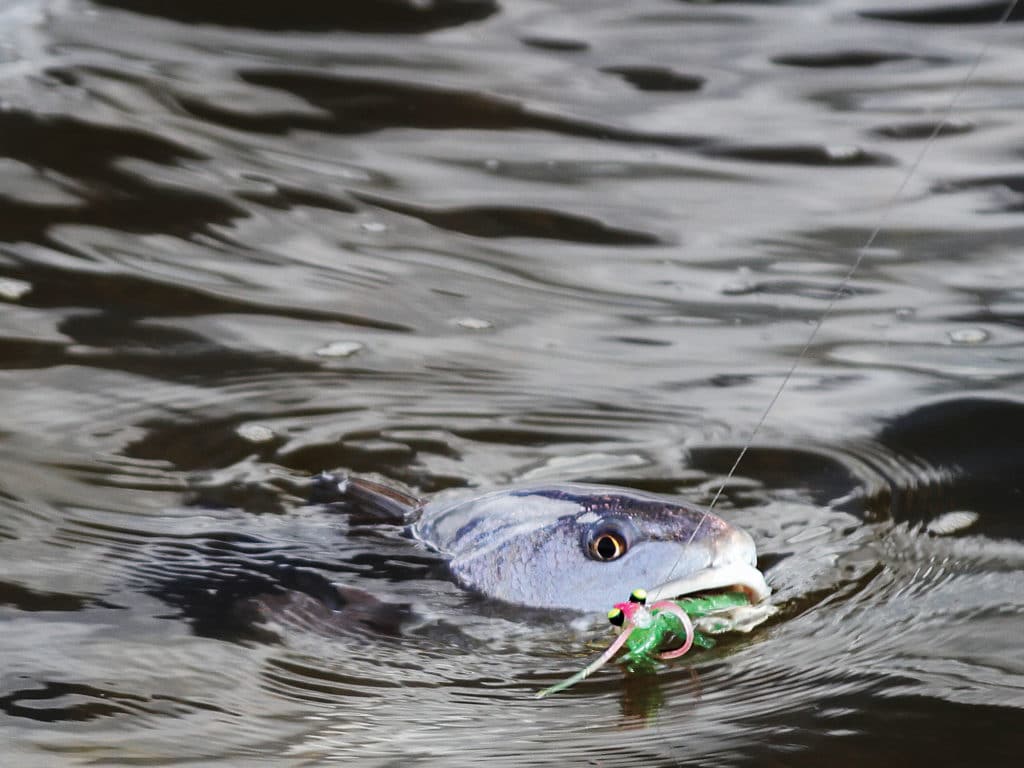
Bottom Composition
Whether you’ll fish over grass, sand or rocks should also weigh on your lure selection. Since much inshore fishing takes place in shallow water and the lures are likely to make contact with the bottom, consider shrimp artificials with a single hook, preferably on top. Lures with dangling trebles, like the Yo-Zuri Crystal Shrimp, can be snag-o-rific, so reserve them for sandy areas or for targeting fish near the surface in deeper water where the lures are less likely to catch grass or snag the bottom.
Shrimp imitations rigged weedless, like the Monster 3X X-Move Shrimp, or lures in which the point of the hook remains hidden, like Savage Gear’s Hybrid Shrimp that magnetically holds the hook out of the way until the strike, are best for working bottom structure and vegetation.
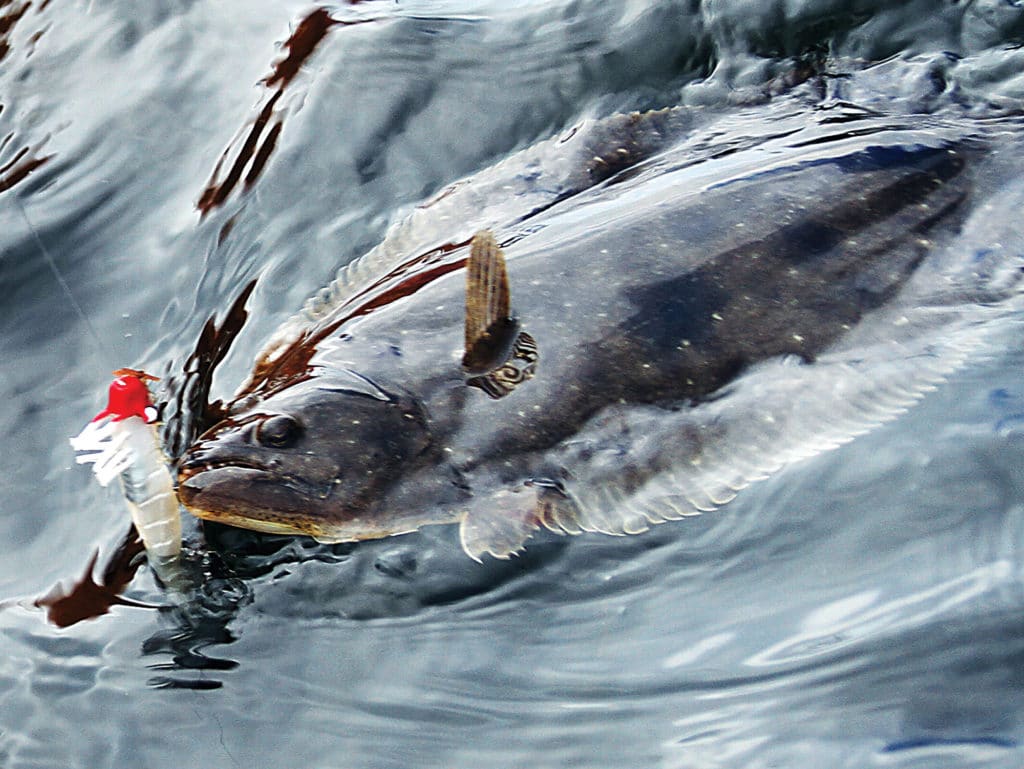
How to Rig and Fish With Artificial Shrimp
There are two primary ways to rig artificial shrimp, both effective in different environments. The simplest is to tie the lure directly to the leader, which works well with topwater and jigging retrieves. The other is tying the shrimp below a popping cork. The length of the leader between the cork and the lure is determined by the water depth and the target fish’s feeding zone. A shorter leader keeps the lure higher in the water column, a longer one lets it go deeper.
Keep in mind that the longer the leader, the more you should allow the lure to drop after every pop of the popping cork. Scented lures, like D.O.A. shrimp and Berkley Gulp!, work well drifted under a cork.
Shrimp will break the surface to avoid predators, but they usually move between midwater and the bottom, so it’s best to allow the lure to sink after the cast, then begin a slow and steady jigging motion. If you tie the shrimp lure directly to your line or leader, mix in a few short jerks of the rod to mimic the flips of a fleeing shrimp and let it sink. If you fish the lure under a popping cork, let it settle between pops.
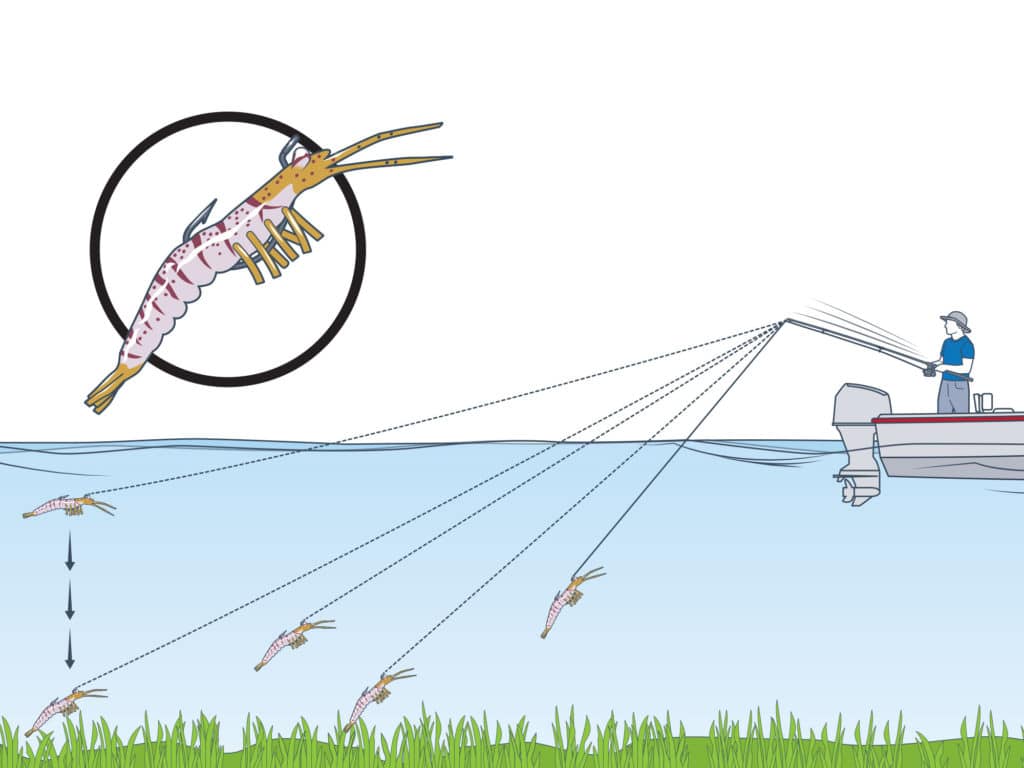
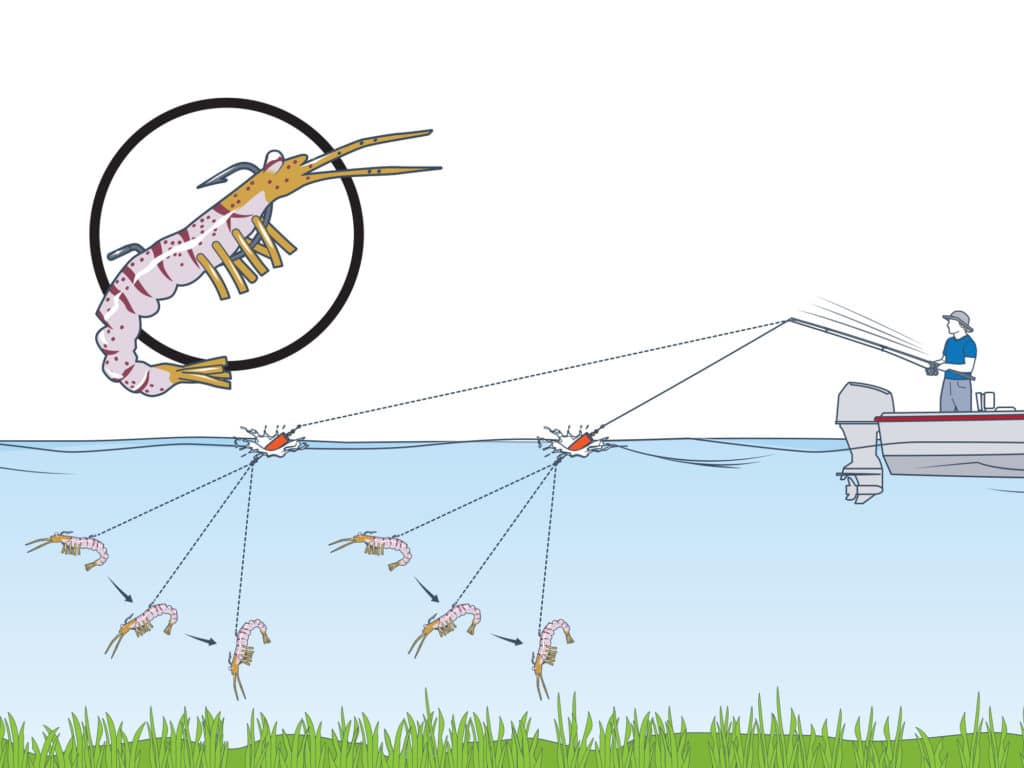
Mimic the Action of a Live Shrimp When Fishing
Live shrimp have two characteristic movements: swimming and fleeing. They swim with their swimmerets (swimming legs), moving slowly forward with their bodies horizontal in the water. But they flee backward with a snapping motion of their entire tail, leaving their bodies curled with their horn pointed forward in defensive posture.
Retrieves that mimic these two distinct movements appear natural to fish looking for a meal. It requires patience to imitate the first, as shrimp don’t move forward very fast. You just allow the lure to sink slowly, then begin a steady, but not jerky, jigging motion, making the lure rise and sink in slow arcs. Fish slowly when using shrimp artificials — a rushed presentation gets less bites. Keep in mind that most strikes occur during the slow decent, and that shrimp lures with the eye of the hook facing forward are better suited for this action.
Shrimp lures with the eye of the hook at midbody or aft are designed to imitate a fleeing shrimp and should be fished with a more rapid, jerking motion, emulating the sudden, panicked retreat of the live crustacean. For this retrieve, allow the artificial to sink slowly and then snap the rod tip briskly in a short flick. Let the shrimp sink again and repeat the snap.
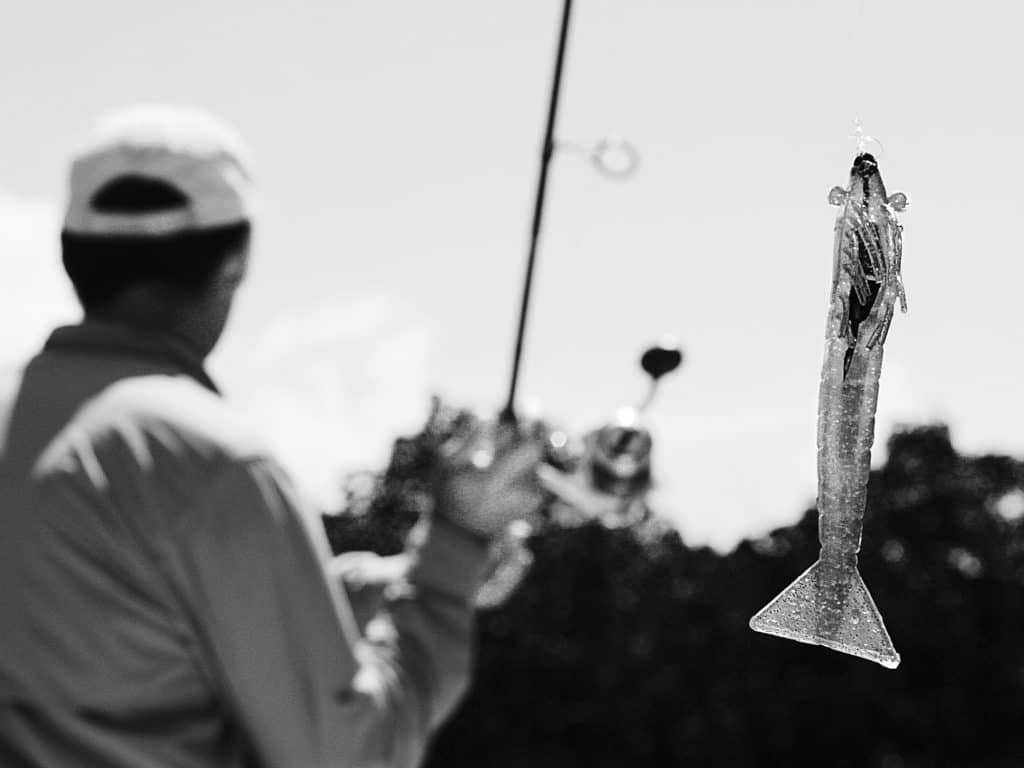
Add Sound to Your Soft Plastic Lure
As a retreating shrimp snaps its tail forward, it makes a clicking or snapping sound that draws fish’s attention. Several artificial shrimp, like Savage Gear’s Hybrid Shrimp, incorporate small rattles to simulate this sound.
The considerably louder sound of a popping cork attracts fish from longer distances. Using one in conjunction with an artificial shrimp is an effective tactic to bring predators close enough to see and hear the snaps of the lure dangling below.
Tips for Soft Plastic Shrimp Lures
1. A drop of Super Glue where the hook enters and exits a soft-plastic shrimp keeps the lure in place. This is often a must when you replace the hook in the artificial.
2. Puffers and other sharp-tooth nibblers tear soft plastics to shreds. If they’re a nuisance, opt for hard-bodied or more rugged soft-plastic shrimp, like those by Savage Gear, Egret Baits and Monster3X.
3. Rigging a small shrimp imitation, like Savage Gear’s TPE Fly Shrimp, 18 to 24 inches behind a larger jig or a topwater plug is a great way to turn followers into takers.









